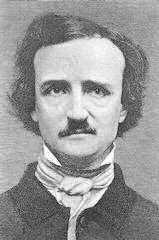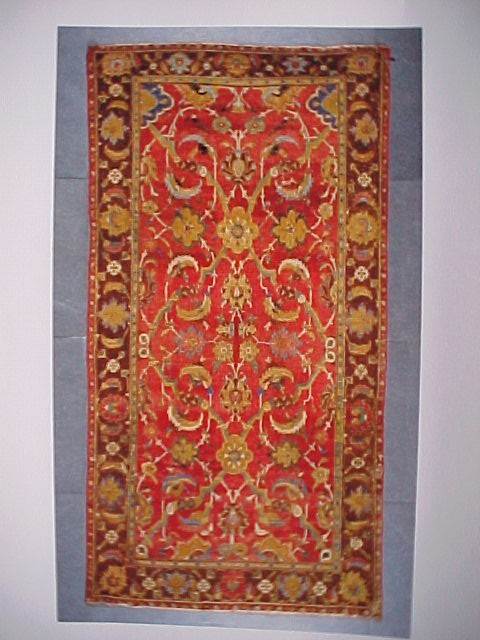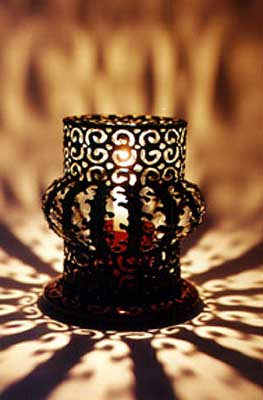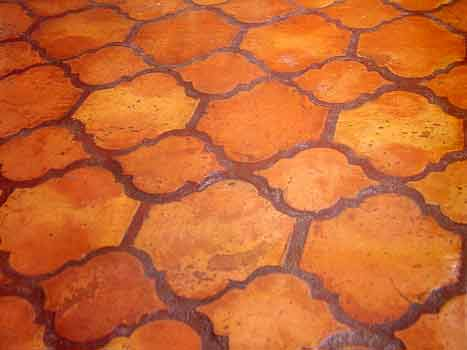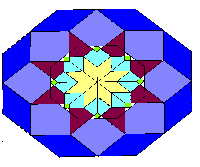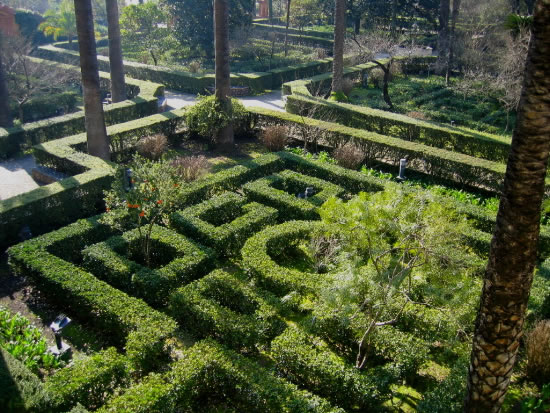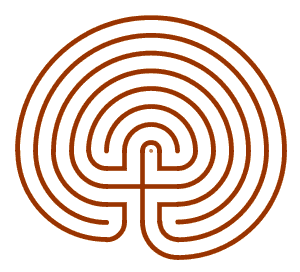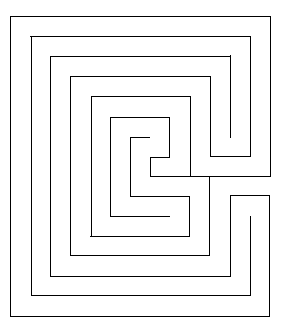LITR
4232 American Renaissance

Poe, “Ligeia” and “The Fall of the House of Usher”
| proposals / projects
Hawthorne assignments questions re Poe European gothic, correspondence arabesque, phantasmagoria |
|
Thursday,
9 March: Poe, “Ligeia” (2462-2472); “The
Fall of the House of Usher” (2472-2486). Research
Project Proposal due.
Reader: Heidi Gerke > reassigned to later in semester
Proposal is due any time between today and next class (14 March)
Email proposal, I'll reply by end of next week
Received emails from Melissa and Cana, will reply before weekend.
proposals / projects
What's a journal?
from syllabus:
Description of Research
Options:
Option 1 (analytic
/ research essay) requirements
- This option involves a more or less "standard College English paper" in which the student analyzes a literary text or texts.
- The topic is open to any type of literary analysis, but it must have some relevance to the course. That is, a member of the class reading your essay would be able to recognize the relevance of the text or its major themes.
- Possible topics: tracing in one text, or comparing and contrasting in more than one text the development of a theme, image, symbol, usage of language, character type, plot pattern, or conflict.
- In terms of primary texts, you may choose a text from beyond this course, but if you use more than one primary text, at least one should be from the course readings.
· In terms of research, you must incorporate references to at least three secondary and background sources--that is, your research sources must include both secondary and background types of research; the distinction will be explained.
- Follow MLA style for documentation and mechanics.
- Length: 7-10 pages + Works Cited
- Research Requirements: One or two primary sources; at least 3 secondary and background sources (distinction explained below). At least one source should be "print"--i. e., not from the internet. (see note below)
Option 2 (journal) requirements
If you choose the journal option, you are not choosing an option that involves less work than the traditional research paper option. You are expected to do just as much work and your writing will be judged by similar standards. However, the writing may be less centrally or consistently focused on one subject. Thus you may pursue several subjects, which may not perfectly cohere, but the journal must be “readable.” That is, your writing should lead the reader and connect from page to page. In brief, the journal I read should not be your first drafts, and it has to be going somewhere.
Possible topics: Transcendentalism; slave narratives; journalism and Manifest Destiny; the Utopian movement of the American Renaissance (Brook Farm, Fourierism, Fruitlands, the Shakers); the rise of popular women's writing; the Abolitionist writers; Southern pro-slavery writers (Simms, Fitzhugh, and others); Whitman and the New York demi-monde (bohemian underworld); the "Concord circle" of writers who gathered around Emerson. Many other topics are also possible, and you are encouraged to develop your own. Look at previous examples of journals for this and other courses online through my faculty website, or leaf through the table of contents and introductions of our anthology for inspiration.
Research journal—required & possible contents: (page suggestions are for double-spaced print)
(Except for the introduction and conclusion, all items and page numbers below are optional or variable according to your interests and findings. In no case should your journal be over 20 pages. Other options are always possible.)
· Introduction (required): rationale: what you wanted to learn and how; preview contents, general themes, choices (1-1 & 1/2 pages)
(All the following “body” components are optional for inclusion or variable in length according to your topics and findings)
- Essential general information about subject: 4-6 pages explaining general subject, drawn from background and secondary sources.
- Review of 2 or 3 secondary sources (articles or books) about your subject. Summarize the content and usefulness of these sources. (1-2 pages each)
- Literary biographies of one or more authors relevant to your subject. Review the lives and writings, summarize importance and contributions. (2-3 pages each)
- Review of one or more websites relevant to your subject. Review contents, accuracy, usefulness. (1-2 pages each)
- Many other possibilities that you will discover as you research. The journal is necessarily a "loose" form, so let your findings dictate your organization.
- Conclusion (required): 1-2 pages summarizing what you have learned, what you would do next if you continued your research, how it might be applied.
Where to list or how to document your “works cited” or “bibliography’ for a journal: You may either fully document your research as you review it, or you may save full documentation for a “Works Cited” at the end of the journal. However, you need not do both; that is, there is no need to duplicate information at the end that you’ve already provided on the way through.
More on Research Requirements
Primary texts. In research writing for literature, primary texts are works of fiction, poetry, or drama. You may refer briefly to three or four primary texts total, but the danger of involving many texts is that the analysis is spread thin.
Background sources refer to handbooks, encyclopedias, and companions to literature that provide basic generic, biographical, or historical information. For purposes of Literature, these books are generally shelved in the PR and PS sections of the Reference section of the library.
Secondary sources refer to critical articles about particular authors or texts. (When you write your analytic / research paper, you are creating a secondary source.) These may take the form of articles or books. Articles may be found in journals or in bound collections of essays. Secondary books may be found on the regular shelves of the library. To find secondary sources, perform a database search on the MLA directory in the Reference section of the library--the reference librarians will help you.
Documentation style: MLA style (parenthetical documentation + Works Cited page, as described in the MLA Handbook for Writers of Research Papers, 4th or 5th edition.
Note on use of online or print sources: Most of the best projects use mostly print sources, while "slacker" projects tend to use the internet almost exclusively. I don't use this as a standard, but this is the way things tend to turn out. (Internet information tends to be a lot looser, more careless, sweeping, and second-hand in its assertions, and overall less deeply researched and edited; when you use print sources, you're generally using a superior text, and that tends to carry over. I grade your project on its merits, but the merits of your project may depend on the merits of your sources. Go to the library!
Hawthorne assignments
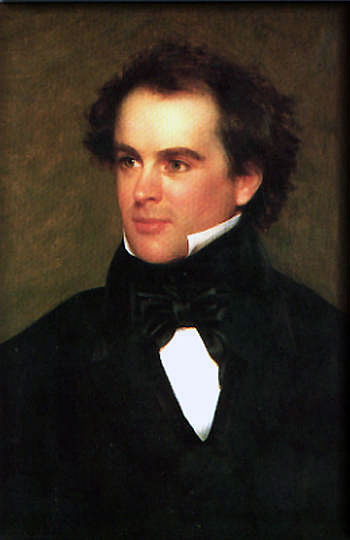
Tuesday, 14 March: spring break
Thursday, 16 March: spring break
Tuesday, 21 March: Nathaniel Hawthorne, introduction (2242-2245) + “The Minister’s Black Veil” (2267-76)
Reader: Bill Wolfe
Thursday, 23 March: Hawthorne, “Young Goodman Brown.” (2258-67)
Reader: Amanda Hanne
Hawthorne assignments
Compare and contrast Poe and Hawthorne
Both use gothic for psychological purposes
Poe as popular, Hawthorne as classical, elite writer
Poe influences more lurid tradition, sensations, surrealism, etc.
Hawthorne more intellectual, lofty, serious, yet elusive, delicate; anticipates Henry James
How does Hawthorne anticipate modern literature?
Ambiguity, perspective
+ compare gothics:
Hawthorne: "moral gothic" of light and dark, good and evil
Moral, not moralizing—less absolute right and wrong than exploration of subject, intermingling of good and evil in human reality—x-unlike other men; > “all have sinned” 2208-09
Puritans as gothic--past, guilt / sin, darkness & light
But also wilderness gothic: forest in Young Goodman Brown 2208
+ YGB as “Rip Van Winkle”
Questions for Poe
Identify gothic
What purposes for the gothic?
Is Poe serious and meaningful, or just great fun and sensation?
What does Poe amount to? Does Poe mean anything, or is it just a great performance?
correspondence
1. act or state of corresponding, relation or agreement of things to each other
or of one thing to another.
2. intercourse between persons by letters
+ Romantic concept concerning relation between inner and outer world, soul and nature, self and cosmos
Emerson 1518 every hour and change corresponds to and authorizes a different state of the mind
"Legend
of Sleepy Hollow"
every
sound of nature, at that witching hour, fluttered his excited imagination
sank deep
in the mind of Ichabod
all the
stories of ghosts and goblins . . . came crowding upon his recollection. The
night grew darker and darker
Poe:
first glimpse of building, insufferable gloom pervaded my spirit
[cf. House] a mind from which darkness . . . poured forth
twinning (cf. "William Wilson")
Roderick and Madeleine twins, sympathies of a scarcely intelligible nature
[twinning of narratives]
desire and loss as "drive" of romance narrative
romance narrative: quest, journey--"search for the Holy Grail"
What makes people go on quests? (desire)
What happens when people get what they want (story ends?)
How keep desire alive? (lose object of desire > nostalgia)
"Romance" 2458
"Annabel Lee" 2473-4
Traditional
European gothic > psychological
Or parody?
(book
that won't stay closed)
decaying city on the Rhine
abbey
excessive antiquity
Gothic tour
raven-black . . . tresses
fair-haired and blue-eyed Lady Rowena
[fair lady / dark lady scheme; compare Byronic hero and "golden boy"
Last of the Mohicans
Alice / Cora = fair lady / dark lady
Magua / Uncas = Byronic hero-villain / "golden boy"
color scheme
memory of color
blood red thing
2413 blood-red moon--[everything goes crash]
phantasmagoric effect
phantasmagoria:
1. an optical effect by which figures on a screen appear to dwindle into the
distance, or to rush toward the observer with enormous increase of size
2. A shifting succession of things seen, imagined, or evoked in the imagination,
as by a fever; a changing medley

1990 Painting "Phantasmagoria"
arabesque
"arabesque" may be most familiar as a dance posture
|
|
|
But "arabesque" also has a meaning in visual art
arabesque: a kind of ornamentation consisting of a fantastic interlacing pattern of flowers, foliage, or fruit, often with figures of men and animals (except in Arabic art), sometimes geometic in character
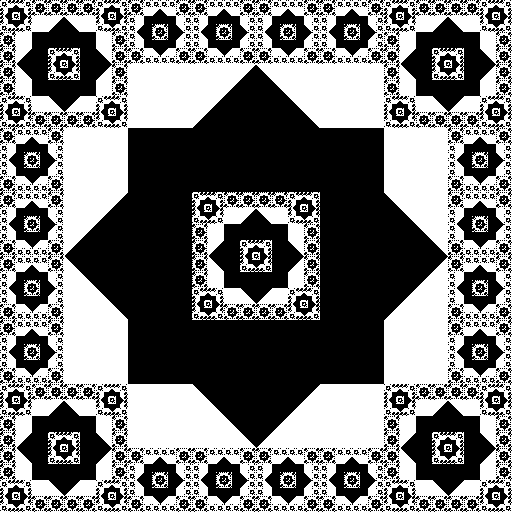
|
|
|
|
|
|

Other ways of describing this art:
stylized
geometric
"orientalism"--tendency to romanticize "oriental" images in Romantic art and literature as "exotic," etc. "The Orient" in the nineteenth century included the Middle East as well as eastern Asia.
2396 Eastern figure, Luxor, arabesque
Islamic art: no representations of humans
maze as frequent feature in gothic
|
|
|
|
|
|
labyrinth:
1. a place full of intricate passageways; a maze, specifically in Greek myth,
the maze in Crete in which the Minotaur was confined.
2. any intricate enclosure, esp. a maze of paths in a park or garden [e. g. The
Shining; also consider Young Goodman Brown's path in the forest]
3. any inextricable or bewildering state of things, etc.; a perplexity
4. anatomy the internal ear
|
|
|
|
|
|
Other stories by Poe use mazes more often than today's readings, e. g. "William Wilson" (1839)
But the house! --how quaint an old building was this! --to me how veritably a palace of enchantment! There was really no end to its windings --to its incomprehensible subdivisions. It was difficult, at any given time, to say with certainty upon which of its two stories one happened to be. From each room to every other there were sure to be found three or four steps either in ascent or descent. Then the lateral branches were innumerable --inconceivable --and so returning in upon themselves, that our most exact ideas in regard to the whole mansion were not very far different from those with which we pondered upon infinity. During the five years of my residence here, I was never able to ascertain with precision, in what remote locality lay the little sleeping apartment assigned to myself and some eighteen or twenty other scholars.
hint of maze-like structure of the gothic in "Usher" 2409
correspondence
1. act or state of corresponding, relation or agreement of things to each other
or of one thing to another.
2. intercourse between persons by letters
+ Romantic concept concerning relation between inner and outer world, soul and nature, self and cosmos
Emerson 1518 every hour and change corresponds to and authorizes a different state of the mind
"Legend
of Sleepy Hollow"
2097 every
sound of nature, at that witching hour, fluttered his excited imagination
2107 sank deep
in the mind of Ichabod
2108 all the
stories of ghosts and goblins . . . came crowding upon his recollection. The
night grew darker and darker
2401 first glimpse of building, insufferable gloom pervaded my spirit
[cf. House] a mind from which darkness . . . poured forth
twinning (cf. "William Wilson")
2409 Roderick and Madeleine twins, sympathies of a scarcely intelligible nature
2411 [twinning of narratives]
psychological gothic
point about material gothic: what does it mean? Is there any meaning beyond the sensation of identity and horror? cf Hawthorne
But psychological allegory sometimes appears--split personality
psychological
2401 vacant eye-like windows
2402 id house and family
2402 fissure in house [= crack in mentality; p : constitutional and family evil, morbid acuteness of the senses]
2392
science of the mind
2411
history of mental disorder
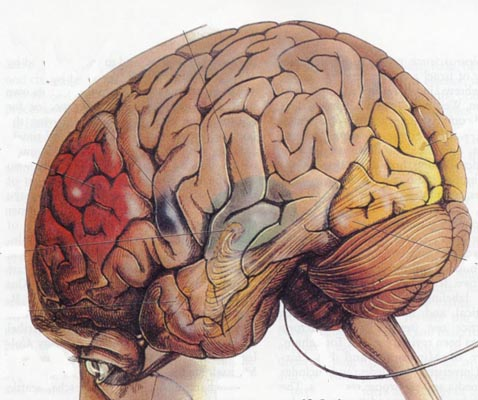
desire
and loss
[love
+ loss]
2399
loss, revival, loss
mistake
“I” in narratives as Poe himself
parents
actors, orphaned, feud with John Allen
married
cousin Virginia at 13
Southern
Literary Messenger [literature in South, Richmond]
“Raven”
overnight success
death of wife Virginia at age of 25
“Ligeia”
2390
decaying city on the Rhine
2390
in fancy the image of her who is no more
2391
raven-black . . . tresses
2392
science of the mind
2392
very verge of remembrance
2392
commonest objects of the universe
2393
metaphysical investigation
2393
a wisdom too divinely precious not to be forbidden
2394
[love + loss] In death only was I fully impressed with the strength of her
affection
2395
a blood red thing
2394
[cf. Emerson] part and parcel
2395
no lack of wealth
2395
abbey . . . gloomy and dreary grandeur
2396
opium
2396
fair-haired and blue-eyed Lady Rowena
2396
ceiling
2396
arabesque
2397
phantasmagoric effect
2397
excitement of my opium dreams
2398
shadow of a shade
2398
I saw, or may have dreamed that I saw
2398
ruby colored fluid
2399
tinge of color
2399
loss, revival, loss
2399 again visions of Ligeia, again
"The
Fall of the House of Usher"
2401
first glimpse of building, insufferable gloom pervaded my spirit
2401
after-dream of reveler on opium
2401
vacant eye-like windows
2401
very ancient family
2402
id house and family
2402
fancy, imagination
2402
excessive antiquity
2402
fissure in house [= crack in mentality; p 1466: constitutional and family evil,
morbid acuteness of the senses]
2402
Gothic archway + ebon, etc.
2403
Gothic tour
2403
half of pity, half of awe + utter astonishment not unmingled with dread
2405
cataleptical
2405 [cf. House] a mind from which darkness . . . poured forth (cf. Ichabod)
cf. every
hour and change corresponds to and authorizes a different state of the mind
2405-6
painting of idea = grave
2406
memory of color
2407
cf Annabel Lee "evil things" x childlike innocence
2408
gothic list of books, cf Borges
2409
identical Madeleine
2409
donjon-keep
2409
Roderick and Madeleine twins, sympathies of a scarcely intelligible nature
intense
sentiment of horror, unaccountable yet unendurable
2410
a tempestuous yet sternly beautiful night + terror
2411
Here is one of your favorite romances
2411
history of mental disorder
2411
[twinning of narratives]
2411-2
knight and dragon
2412
counterpart
2413
blood-red moon--[everything goes crash]
[cf.
“City in the Sea”]
point about material gothic: what does it mean? Is there any meaning beyond the sensation of identity and horror? cf Hawthorne
But psychological allegory sometimes appears--split personality
Review
Byronic hero
Incest
as Romantic taboo: Byron, Heathclif
2388
married cousin Virginia at 13 (Byronic incest: Byron, Heathcliff—one of last 2
taboos)
2388 Southern Literary Messenger [literature in South, Richmond]
(south
as closer to Europe, ideology of chivalry)
bad luck with women
2453 death of beautiful woman
